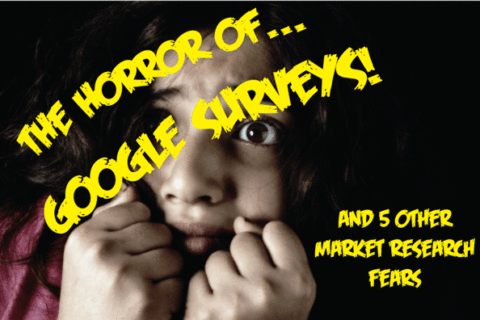Ralf Matthaes
After over 100 years of war and 20 years of complete western isolation, Vietnam has slowly but surely emerged onto the economic global scene. With the launching of “Doi Moi” (economic renovation) in the early 1990s, the lifting of US Sanctions in 1995, the signing of the US Bilateral Trade Agreement in 2006 and Vietnam’s accession into the WTO in 2007, Vietnam has almost come full circle in a mere 20 years. With a population of 89 million, of which 35% are under 19, Vietnam’s best consumer days are still ahead. Vietnam is still an agricultural society with 69% of its population base living in rural Vietnam. However as in most developing cultures, urban migration has created a vibrant and lively urban consumer economy of some 28 million, of which over 50% are considered medium to high income consumers with incomes exceeding US $5000 / year and above.
What makes Vietnam unique?
Vietnam is very different from its other Asian neighbours which can best be explained as “the factor of one advantage”. Vietnam is unique in that it benefits from very a homogeneous population, where 95% of the population are Kinh, everyone speaks Viet as a primary language and the majority of Vietnamese are non-denominational religiously. Hence, unlike, The Philippines, Indonesia, etc, Vietnam is actually easier to access in terms of marketing strategy and product acceptance than most other Asian nations and certainly easier from a market research perspective. Furthermore, Vietnam benefits from having over 2,700 kilometres of coast line and one major highway, Highway #1 North to South Route, where close to 80% of the population live within 20 kilometers, making distribution simple and inexpensive.
Worlds Apart
Vietnam still suffers from some unique and emerging polarisations which have significant impact on how research is conducted.
Rich Man – Poor Man – In the early 1990’s over 60% of Vietnam’s population was living on or below the poverty line (US $1 / day income), making Vietnam one of the poorest places on earth. Forward twenty years and Vietnam has been recognised as one of the world’s donor community darlings, as poverty reduction has truly been a magnificent achievement. However, income, which has quadrupled in 15 years, does not spread its wealth equally!
The key issues today, especially for marketers and market researchers, is providing representation of the population in terms of product, price / affordability and gauging SEC as wealth has created large gaps and new but undefined segmentation and opportunities for sharp positioning. Twenty years ago it was easy – everyone was poor so umbrella advertising worked well so long as your product was priced responsibly. Today there are so many new segments, needs, desires and price points, it is becoming difficult to keep up with the movement of wealth and more recently the spreading of the bottom of the pyramid, as inflation has impacted on the poor in both urban and rural Vietnam. Over 60% of the nations’ population is considered bottom of the pyramid, while only about 10% can truly be considered affluent and much of the divide is polarised between rural and urban dwellers.
Bright lights – big city – With 64 provinces, 5 metro urban cities, 13 secondary cities and 427 rural communes, Vietnam has three geographical / economic classes of consumer groups. Typically well over 50% of all GDP comes from the 18 big cities, but these battlegrounds have already been picked over and are somewhat saturated and very competitive. The new battleground is rural Vietnam. However, unless the supply chain can be multitiered in terms of product penetration, rural distribution becomes prohibitive. Unilever, Pepsi and Coca-Cola have all done well in rural Vietnam, as they have multiple product lines sitting in traditional trade outlets, allowing reduced delivery costs while also being able to dictate shelf space and location. Critical to success in rural Vietnam is also pack size and price points, thus having a sound understanding of rural consumer needs becomes absolute with regards to success. Considering that well over 95% of retailing in rural Vietnam is traditional trade and the wet market acts as a semi-wholesaler to other outlets, sheer volume must be achieved to drive margin.
In urban Vietnam 20% of retail is via modern trade outlets. However, due to the ENT clause written into the WTO retail legislation, foreign companies are only allowed to own one outlet in the country. If they wish to open a second an economic needs assessment test must be conducted to see how many small traditional retailer will be affected. This has stunted the growth of modern trade.
North & South – Though much has been made about the American war in Vietnam, the difference between north and south is less a clash of ideologies and more a clash of “keeping up with the Jones’”. Southern Vietnam has had foreign contact for many years and has actually become somewhat westernised by this long relationship. In the north of Vietnam capitalism was frowned upon and collective farming became the norm. With the advent of “Doi Moi” market capitalism was suddenly, if not cautiously accepted in the North, while in southern Vietnam, it almost appeared to be business as before the country reunified. Thus the difference in terms of location has more to do with experience and understanding commerce and brands, than anything else. Basically the north has spent the last few years trying to catch up with the rest of Vietnam in terms of ownership of goods and creating their own new image to the world via brands. As way of example, in Ho Chi Minh City, the commercial capital, a young male consumer who wants to purchase a watch will look into his wallet, go to the appropriate priced outlets and look for the style of watch that meets his image and price criteria. Alternatively, in Hanoi, this consumer will see what his peers or bosses are wearing, borrow some money, if he cannot afford, and buy a Tag Heuer or Omega watch. Thus, brand as an aspiration plays a bigger role in Hanoi than in HCMC. Interestingly, Hanoian’s who were isolated for many years and had to make due with third rate products form the Warsaw-Pact countries, are now not surprisingly more cautious about quality and hence tend to rate product efficacy lower than their southern cousins. This tends to relate to experience and education, as in general Vietnamese are a very bright and intelligent people, but lack education and above all experience.
Brand paradise or Brand minefield?
In the early nineties, brands as we know them did not exist in Vietnam. A brand was a logo, nothing more and country of origin counted for everything. When buying a cola, you received it with crushed ice in a plastic bag and a straw hanging out of the elastic tied top… YUMMY! Well, as Vietnam has evolved so have brands and the meaning of what a brand actually is. Driven by the Unilever’s, Coke’s and Nestles’ of the world, today brands are very much the flagship of aspiration and outward signs of success, creativity and what we refer to as social signs of recognition.
A brand for many Vietnamese is an example of self-expression in terms of outward image to be projected to the world at large. Thus branded clothing and accessories such as hand bags, etc are the cat’s meow for women, while no man can be seen without a the latest and greatest mobile phone or motorbike. Basically the country’s purchasing power can be summed up as the 3Ms: Mobile – Motorbike – Money. Cash is king, in a market bled dry recently by a credit crisis.
There are over 400,000 Vietnamese companies, most of which opened only after 2000, now competing on a more or less equal footing with the global giants. These companies, though taking some time to take root, have discovered that; consistency, quality, advertising and aspiration play a critical role in driving sales of their brands.
However, not all is rosy on the brand front. Vietnamese consumers still have very little trust in Vietnamese brands that require a large cash outlay, such as cars, motorbikes or TV’s. As Vietnam is still a poor country price point is still the critical decision making criteria for purchasing for most Vietnamese and hence, assurance that foreign brands, especially well known big brands bring, becomes a stamp of approval, a warrantee of sorts.
Thus local brands have taken root in the lower price point categories, especially in the F&B sectors, personal care and lower end services, but still require the proof of longevity in other sectors, where cost is prohibitive.
Method to the madness
Vietnam is still a very traditional research market, with over 90% of all interviewing being conducted face-to-face. And over 80% conducted in the key 5 cities. Already 67% of the urban population uses the internet daily and 31% already access via their mobile phones, yet face-to-face interviewing is still prominent. Considering that internet home penetration in rural Vietnam is only 2.1%, over 50% of all users are between 15 and 25 years old and have limited funds and internet panels are still more expensive that face-to-face, it is clear why on-line has not taken off. Furthermore, the representation and managed panels that do exist in Vietnam are in their infancy and have a long way to go to become a reliable source of consumers.
The latest technology to evolve in Vietnam conducting survey’s using hand held devices such as iPads. This technology which has only surfaced in the last 12 months, is increasing the speed of delivery and quality of interviews, but cost still remains similar if not slightly more that face-to-face.
Steep Competition
In the last 36 months the number of customised market research companies which have opened in Vietnam have doubled the market, while the growth of the market has roughly been 8-10% year on year. This growth has largely been driven by syndicated services such as media ratings and retail audit. This has caused a dilution of talent and experience and has also negatively impacted the industry as a whole in terms of quality and experience of service. There are now too many one-man bands who are eroding both quality and price points. Vietnam is already in the 5th lowest percentile in terms of research costs in the world, while inflation has been a staggering combined 50% since 2008, and the cost for research has remained the same. This does not bode well for the future of the Vietnamese market research industry, as Vietnam could go the way of India and become a commoditised market.
Solution
Thus the only way forward is to slowly but surely drive research insights via technological advances, harness the rural consumer and move the industry towards a more consultative platform. Opportunities are still immense in Vietnam, but to be successful, you need to invest in advanced data collection methods, rural and people to survive.
Ralf Matthaes is Regional Managing Director – Indochina & Myanmar TNS
For those wishing to join ESOMAR in Vietnam for our annual Asia Pacific event, which takes place in Ho Chi Minh City on 7th – 9th April, please visit www.esomar.org/apac


